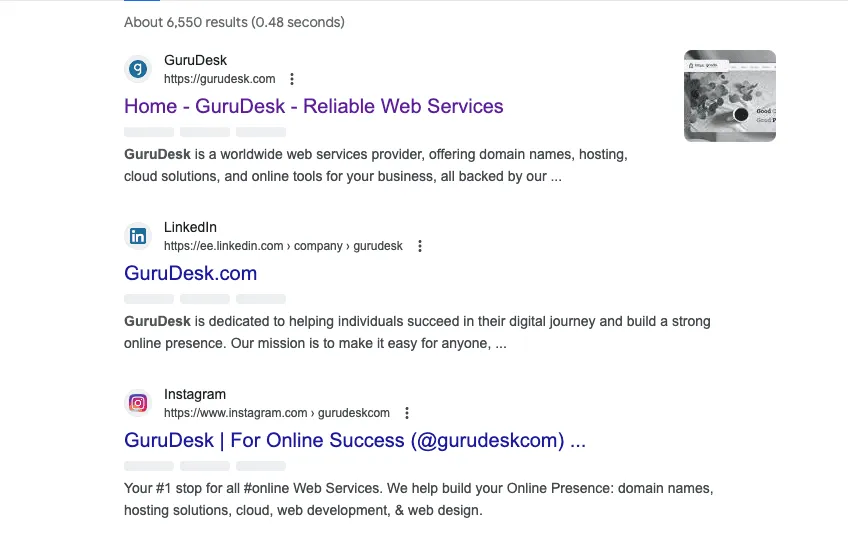
Meta Descriptions – Ready to publish, but having figured out how to best summarize your blog in the meta description? Well, let us give you a quick crash course and tell you a little bit more about what meta descriptions are, how they’re useful, and ways in which you can create an optimized meta description suitable for your blog, business, and niche.
What are Meta Descriptions?
A brief summary or snippet of text that best describes the content of a website page. Basically, a meta description is supposed to serve as a concise preview of what users can expect to find when they click on a search engine result. They appear below the page title on a search engine result page (SERP) and provide users with a glimpse of what to expect within the page in terms of relevance and value.

Why Do You Need Meta Descriptions?
You might be wondering, ‘What’s the importance of having a good meta description?” Let us explain.
Improved Search Engine Visibility: A well-crafted meta description includes relevant keywords, which you’ve procured during your keyword research phase. Relevant keywords can improve your website’s visibility in search engine results. A compelling meta description can nudge users to click on your link, therefore increasing organic traffic to your website.
Increased Click-Through Rates (CTR): Users are more likely to click on your link in the search results if you take the time to craft an engaging meta description. Attract consumers’ attention and persuade them that your page is worth viewing by offering a succinct and captivating overview of your content. A better CTR means more people will see your ad and maybe even buy anything.
Clear Content: Using meta descriptions, you may quickly convey the page’s purpose or essential points to search engines. A user’s ability to rapidly assess if your page is relevant to their search intent depends on how well you describe it. As a result, users have a better experience as a whole, and there is a decrease in bounce rates.
Branding and Differentiation: Making your meta descriptions stand out from the crowd is a great way to set yourself apart from the competition. Users who are interested in what you have to offer can be attracted to your page by emphasizing its unique selling points, benefits, or unusual characteristics.
Requirements

Length
The ideal length for a meta description is between 150 and 160 characters. This makes it such that the entire phrase will appear in the search engine results pages (SERPs) and not get cut off. Search engines may display larger snippets, but following the guidelines helps keep things consistent and ensures nothing crucial is left out.
Character Limit
Usually, a meta description can only have between 150 and 160 characters. Adhering to this limit will prevent your description from being shortened in search engine results pages (SERPs). You can convey the value of your content and entice readers to click on to your site by keeping your meta descriptions brief, interesting, and within the recommended character count.
Uniqueness
Avoid problems with duplicate content by writing original meta descriptions for each page. In order to increase a page’s exposure and relevance in search results, it is best to craft a unique meta description for each page.
Call to Action (CTA)
If you want people to click on your link, you should put a compelling call to action in your meta description. To encourage viewers to perform the required action, you might use phrases like “Learn more,” “Discover now,” or “Get started.”
In case you’re finding it hard to jumpstart your call to action, we’ve written an easy how-to blog that can assist you in creating the perfect CTA!

Meta Description for Google
If you want more people to see your website in Google search results, you need to write a compelling meta description. Google frequently shows succinct snippets of meta descriptions under the page title when users type relevant queries. Users are more likely to click on your link if you employ relevant keywords and provide a compelling overview of your content. If you want your meta description to display correctly, make sure you don’t go above the character limit.
Examples of Meta Descriptions
“Find out what search engine optimization strategies work best for your website. Expert SEO techniques can increase brand recognition and visitors from natural search results.”
“In search of tasty and nutritious meal ideas? Look through our list of simple recipes that are good for you and your taste buds.
“Shop for the ideal present at any time of year. Browse our extensive collection of one-of-a-kind and customized gifts that are sure to impress your loved ones.”
Master Meta Descriptions
Now that you’ve brushed on the basics and have understood the best way to begin, ensure that you use the keywords ranked him. If you’re unaware of the point, let us explain!
SEO, search engine optimization, is necessary for crawlers to collect data and add it to the pool of links existing in your niche. Using common keywords allows for crawlers to collect data and find value within your content. We’re your trustee side kicks, and we aim at giving the basics in every possible way we have to offer. For a guide, check out our blog, Blog SEO: #1 Step-by-Step Guide.
Join the GuruDesk community and be among the first ones to discover the hottest trends in web services! We are a team of web experts and we love sharing our knowledge and experience with our readers! We share tips and tricks on a wide range of topics, including web development, cloud services, and hosting. Whether you are a seasoned pro or just starting out, we promise you will find valuable information here. So go ahead, hit that “Subscribe” button and let the fun begin!






